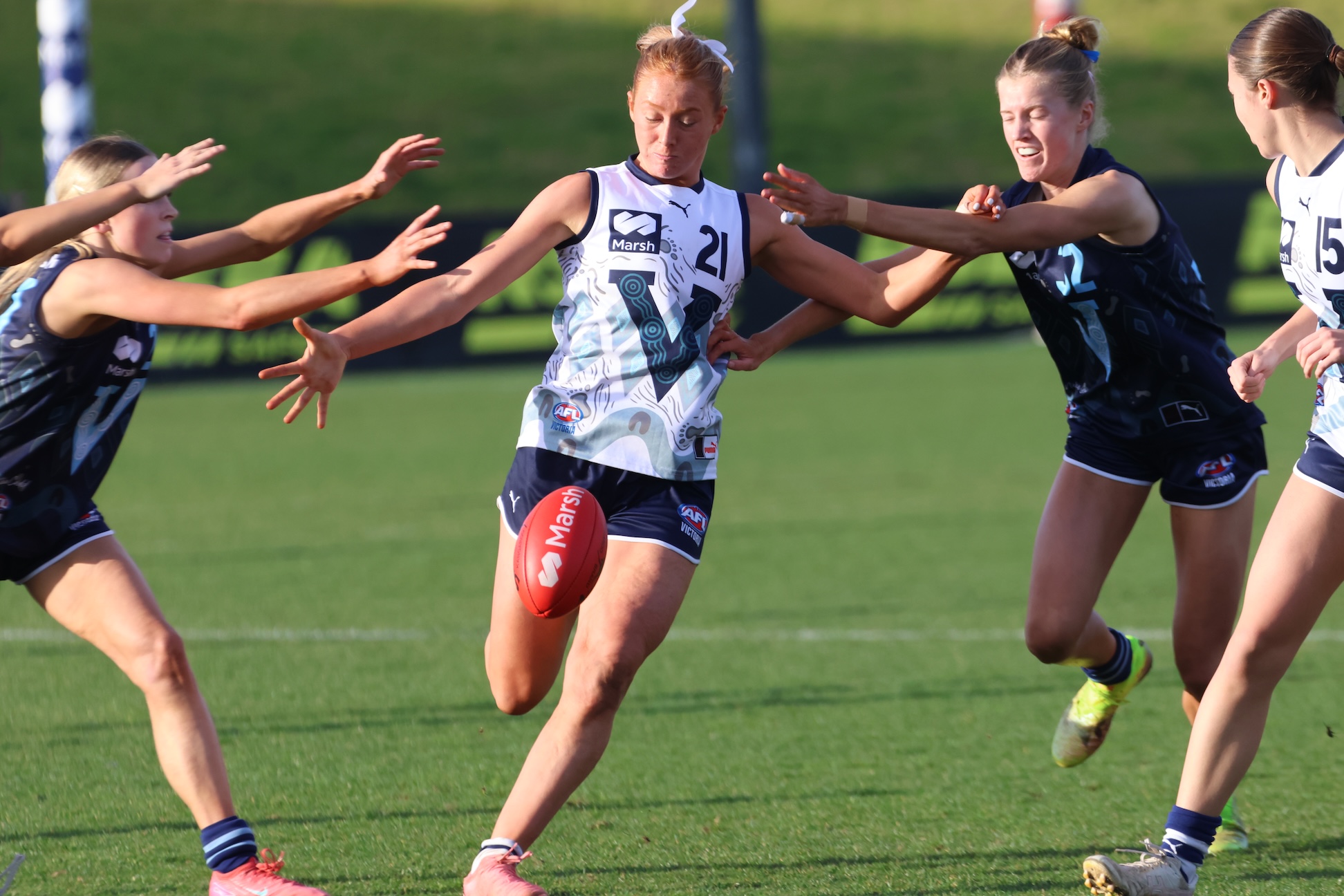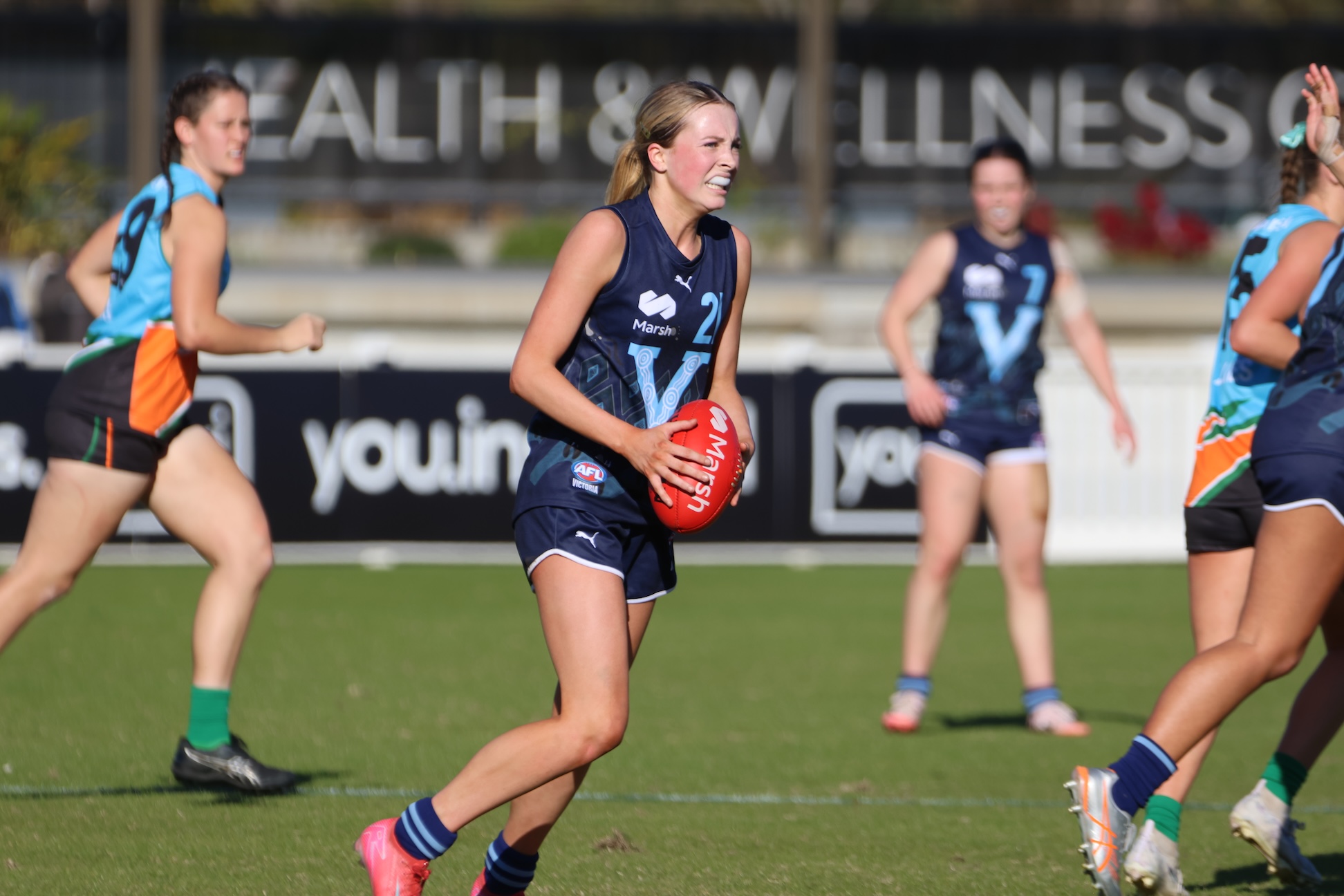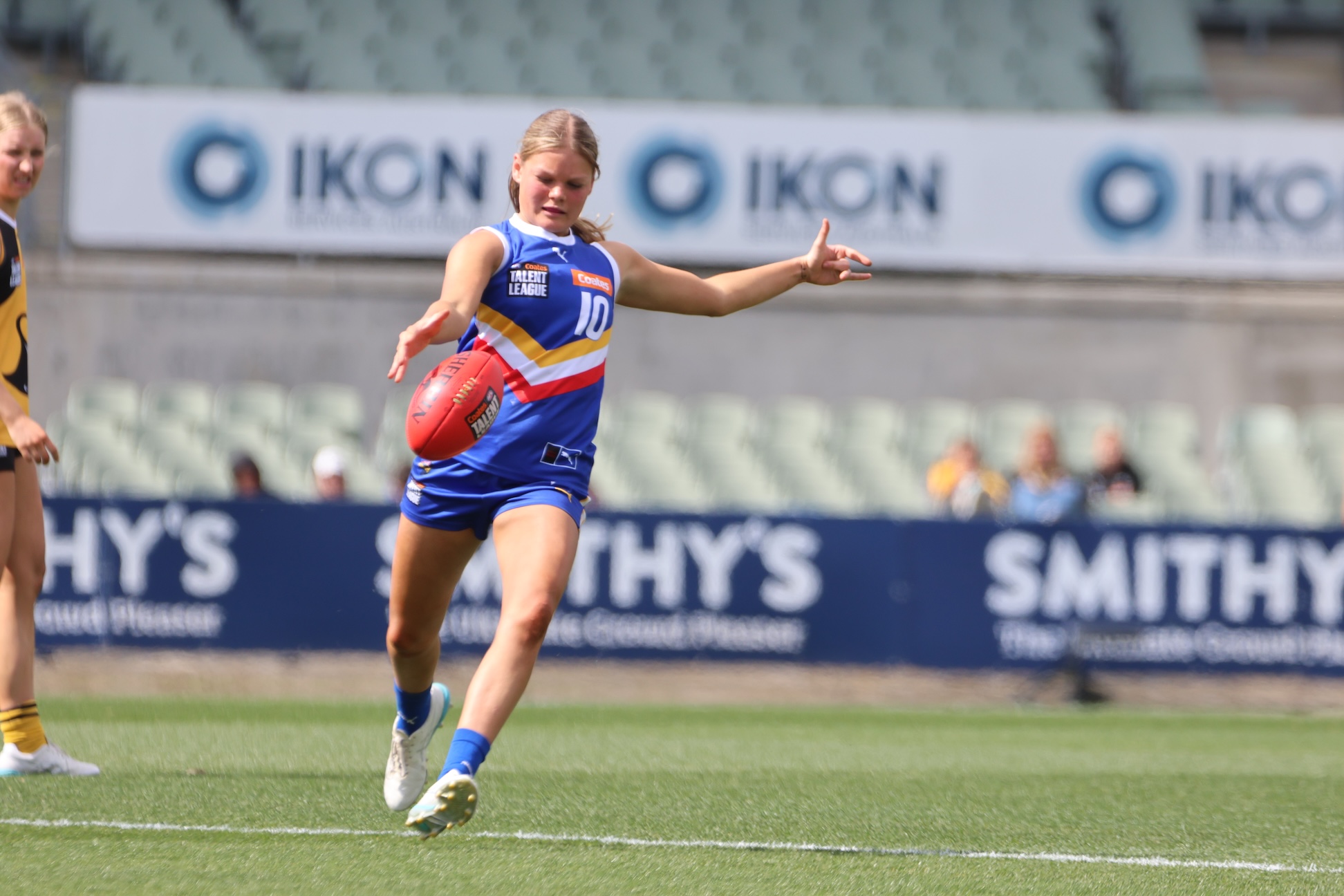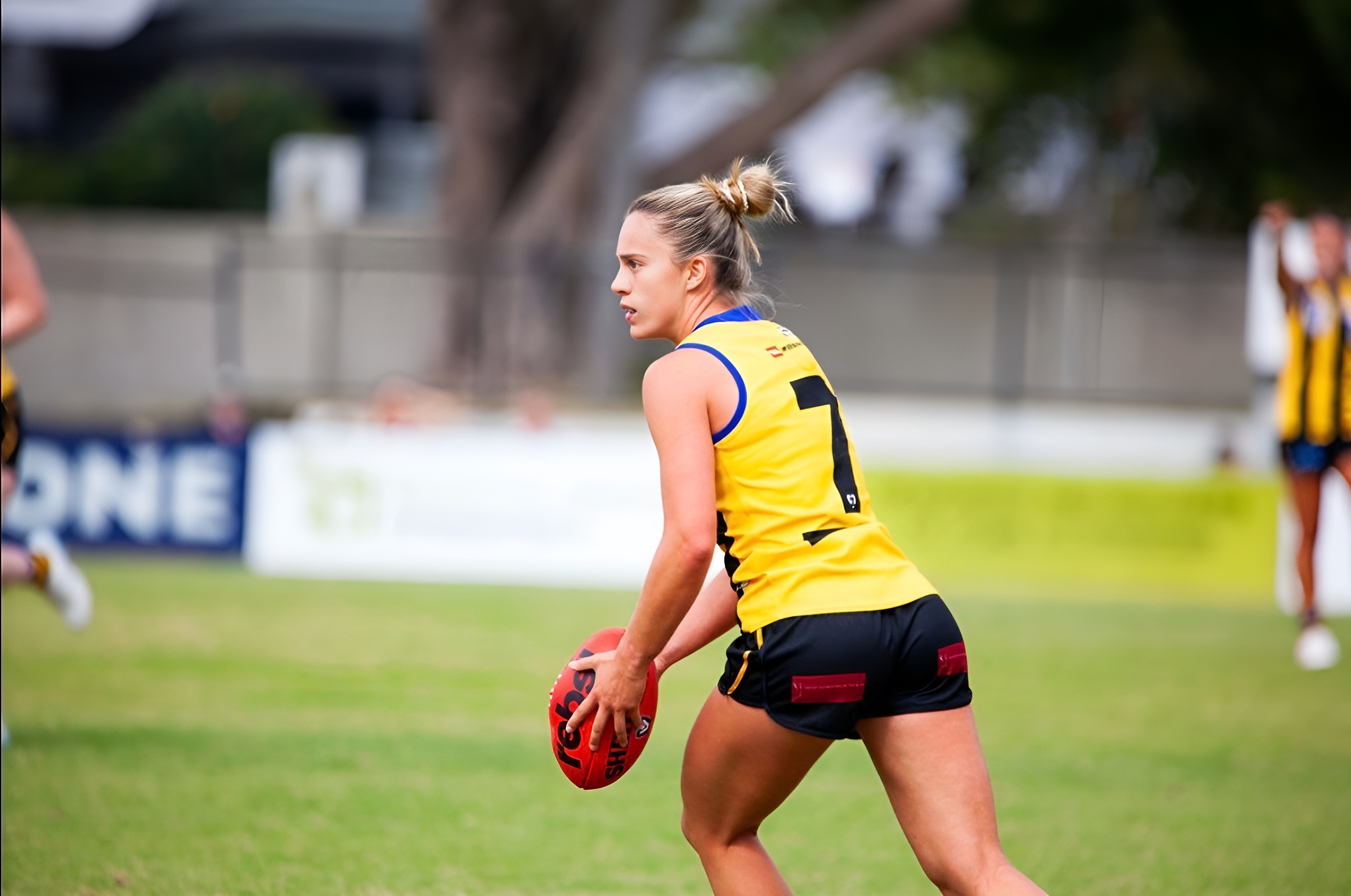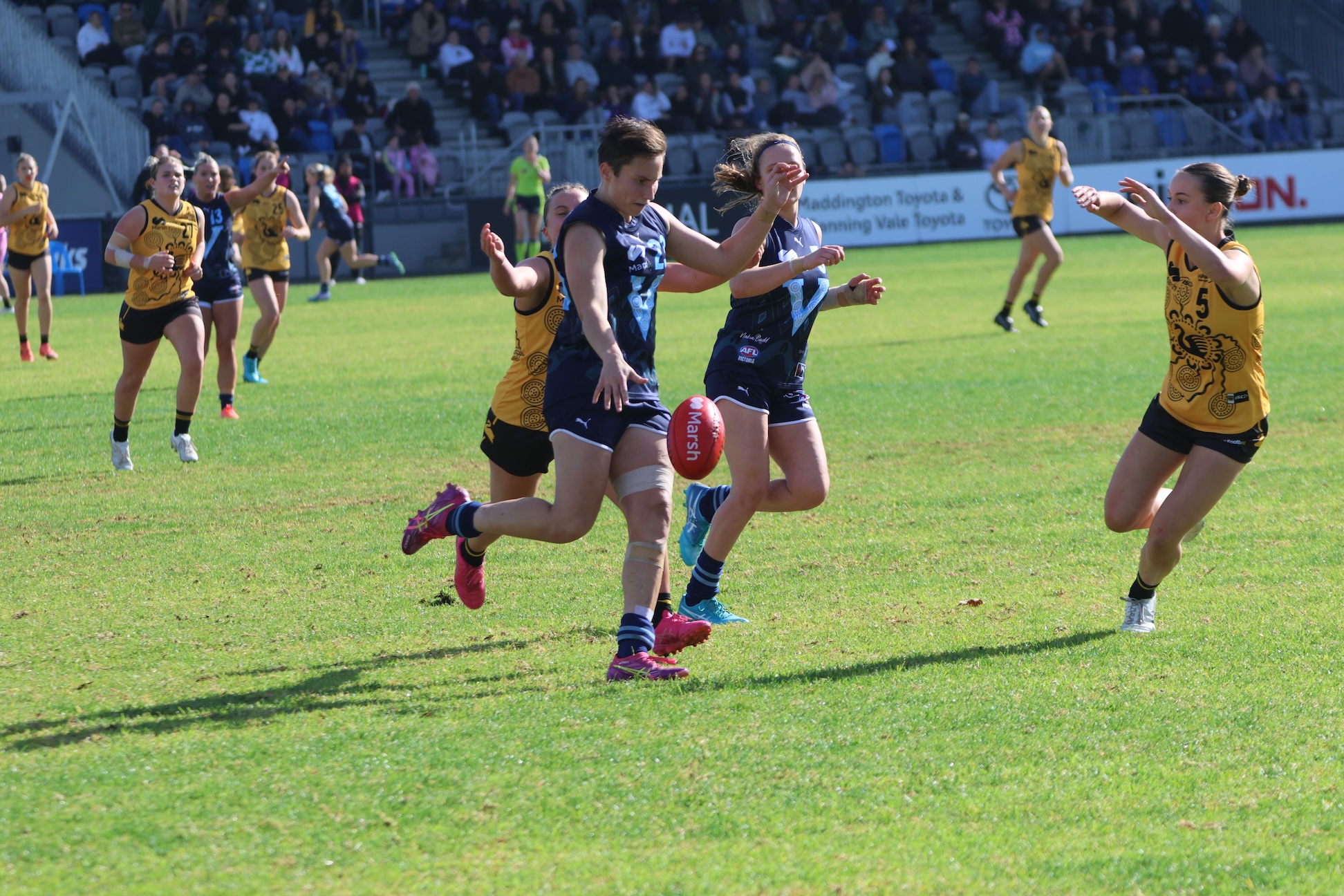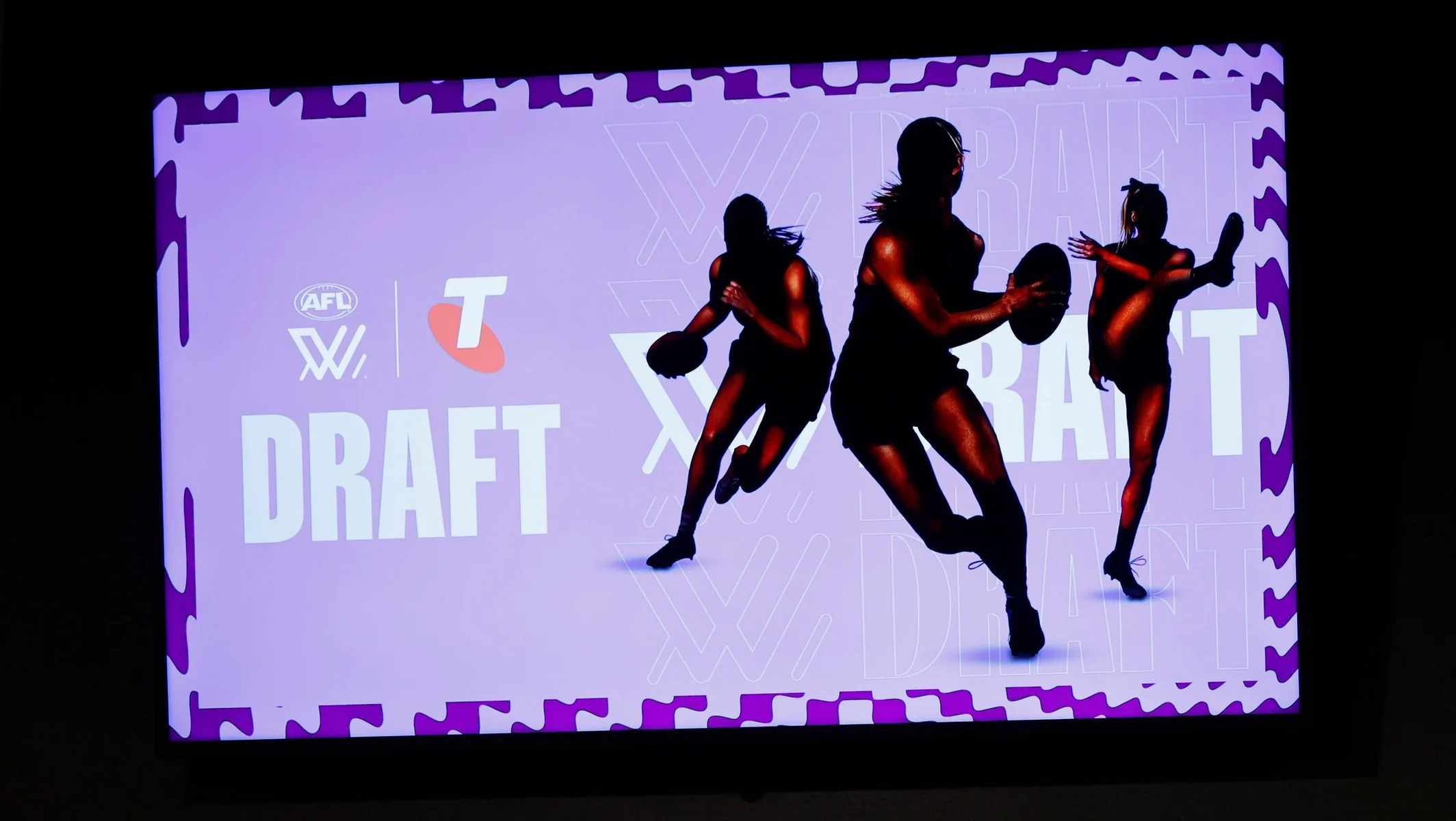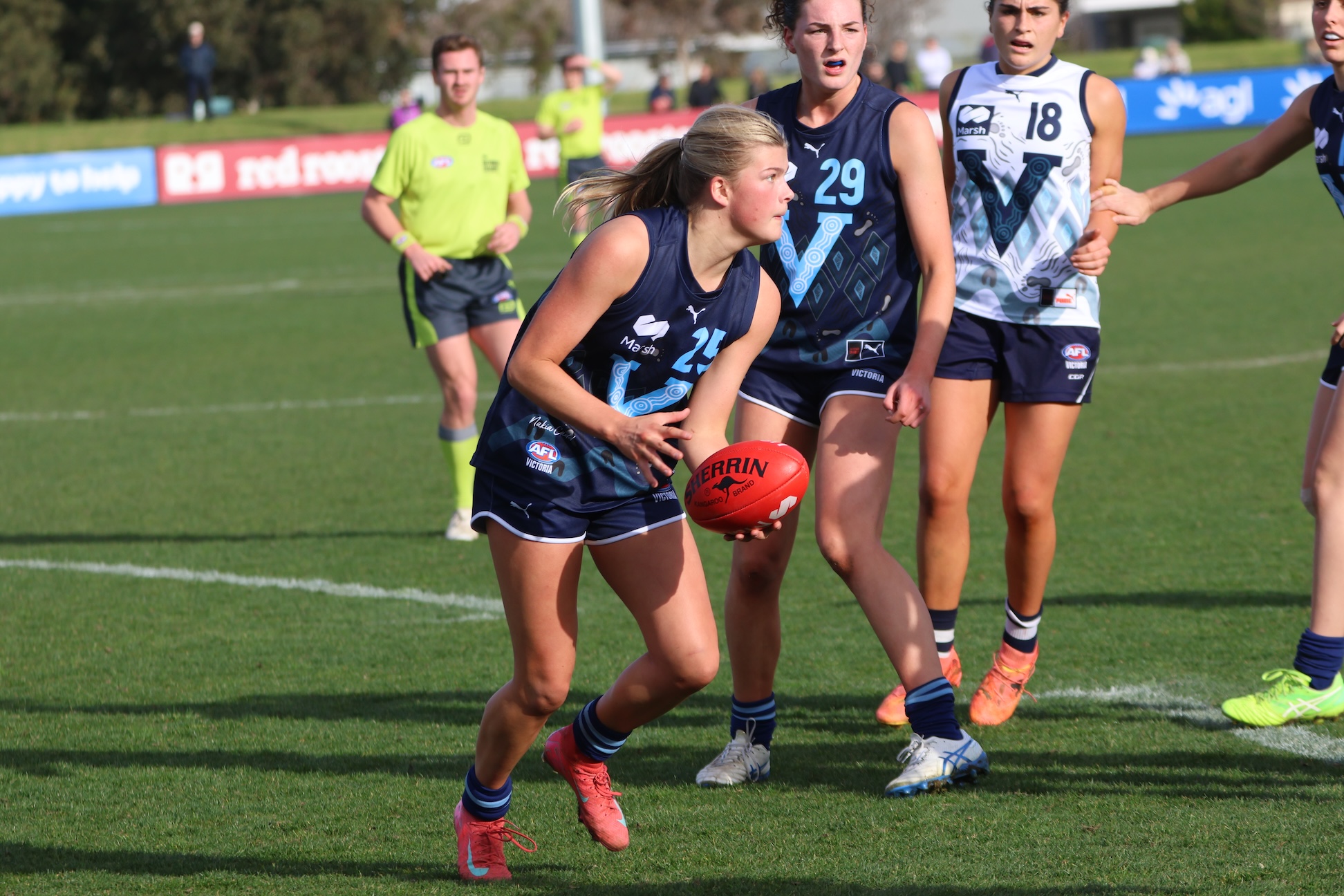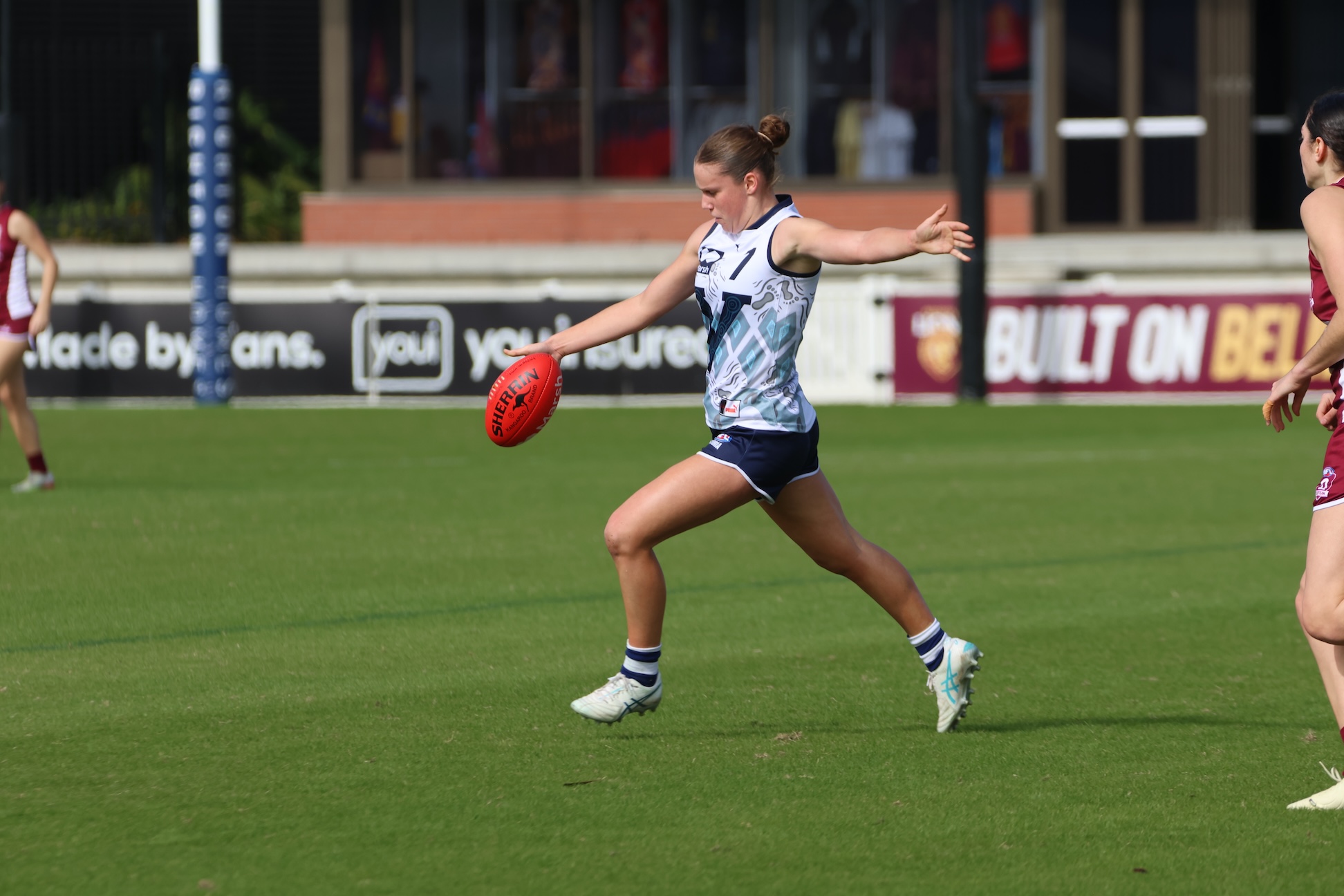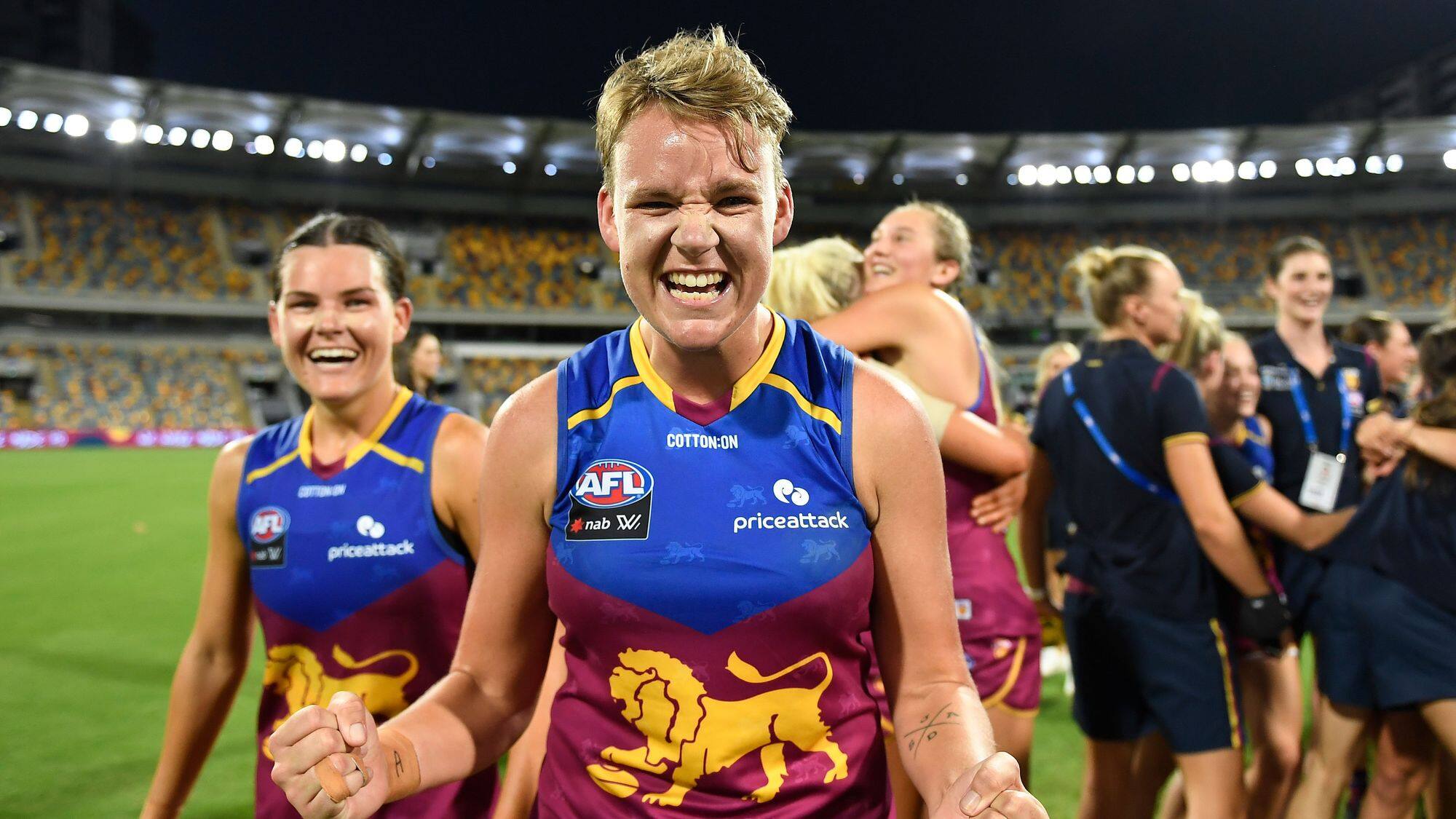Dan Houston
Oakleigh Chargers
Height: 187 cm
Weight: 83 kg
Position: Key forward/third tall/utility
Strengths: Overhead marking, set shots, vision and crumbing
Weaknesses: Undersized, flexibility, tackling and forward pressure.
Player comparison: Mark LeCras
First-year output: Long-term prospect
Kicking: Average
Marking: Excellent
Endurance: Above average
Speed: Average
Statistics:
Oakleigh Chargers (TAC Cup) – five games, 9.6 kicks, 5.2 handballs, 15 disposals, 72 per cent disposal efficiency, seven marks, 2.6 tackles, 1.6 goals
Vic Metro (Under 18s Championships) – three games, 7.3 kicks, two handballs, 9.3 disposals, 66 per cent efficiency, five marks, two tackles, 1.6 goals
Dan Houston is a future prospect, who could develop into an important player if he is able to add more strings to his bow. Most would know him from his work in Oakleigh’s grand final win last year, where he took several telling marks in the forward 50, and casually slotted even the toughest of attempts.
Houston is an undersized key forward in the way he plays, but he’s got many forward aspects to his game. Houston has a bit of Mark LeCras about him in his game style. He is one of the hardest working players on the lead, as he continually leads up towards the 50, but then he’ll double back and do second or third leads.
He’s one of the best key forwards in this year’s draft crop when the ball hits the deck. He has great special awareness, and strength to bust out of tackles. He can duck and weave through traffic and he is a tremendous finisher around the body. He can crumb his own work, so he’s got the ability to fit in any forward line as a unique forward.
The big question mark over Houston is his ability to do it more often. Besides from his four goals against South Australia, he has not set the world on fire at the under 18 championships. He averages seven marks per week for the Oakleigh Chargers, but just 1.6 goals. This is attributed to the fact he spent the first few games in defence – a move that did not work out.
After switching back to the forward line, Houston booted five goals against the Eastern Ranges last week. He has that ability to be very good, he just needs to apply it more often. The majority of Houston’s marks come from his hard leading, but his athleticism allows him to create separation on his lead. He’s also got a pretty good leap and excellent aerial skills, which allows him to take overhead pack marks.
Houston is one of the better set shot kicks in the TAC Cup. His ball drop and kicking action are quite good. He’s clearly spent plenty of time on this, as he has improved his goal kicking accuracy. Quite often, Houston will have two or three really difficult shots from long range or from a tough angle, but it often does not worry him. This is not to say he is an unbelievable shot at goal, but he is up there in terms of set shot kickers.
Houston kicked 26 goals and 14 behinds from 13 games as an underage prospect last year. His two best games statistically were his seven-goal haul against Queensland and then his nine marks (five contested) and three goals against the Geelong Falcons the following week.
Houston has great vision, and in the right AFL setting, he could play as a high half forward delivering the ball into the forward 50. His passing isn’t quite as good as his kicking on goal, but it is still very effective.
Despite having all these talents, Houston is a bit of a gamble for some clubs. His size is obviously an issue, as clubs wouldn’t want to take someone who has played his best football as a key tall, yet is less than 190 centimetres. His type is the least draftable player in football, with very few finding their way through to the AFL.
One only has to look as far as Gippsland’s Josh Scott who dominated as an over-ager and he failed to find a place on an AFL list. They are a similar type and Scott was booting bigger bags that Houston, although to the Oakleigh forward’s credit, he has better athleticism than Scott.
Houston is well built, athletically gifted and has the skill set to play in a traditionally smaller player’s role. Oakleigh tried to play Houston off the half back line and occasionally through the middle. Unfortunately, he just didn’t have his usual influence, and couldn’t find the ball enough to be damaging. It was only a small sample size, but it looks abundantly clear that his skill set is best suited up forward.
Kyle Langford played a very similar role to Houston last year for the Knights, but it was Langford’s versatility that got him drafted so highly. Importantly, Langford was able to lay plenty of tackles, and increase his disposal numbers to around 15-20 touches most weeks. Langford was also excellent as a backman too. Indeed, Langford was also a similar height at 190 cm, although he was much skinnier. Houston needs to follow in Langford’s steps and show that he can get better defensively inside the forward 50.
In order to get drafted, Houston needs to ensure he is not pigeon-holed as an undersized key forward. He needs to keep building on what the coaches have tried to do by moving up the field, or dominate inside forward 50. This means raising his goals per game average to between three to four goals and becoming a dominant key forward.
If he can do this, he stands a good chance of being drafted, but he needs to put his hand up and demand to be picked with strong performances in the second half of the season, because his best is very good, he just needs to do it more often.


